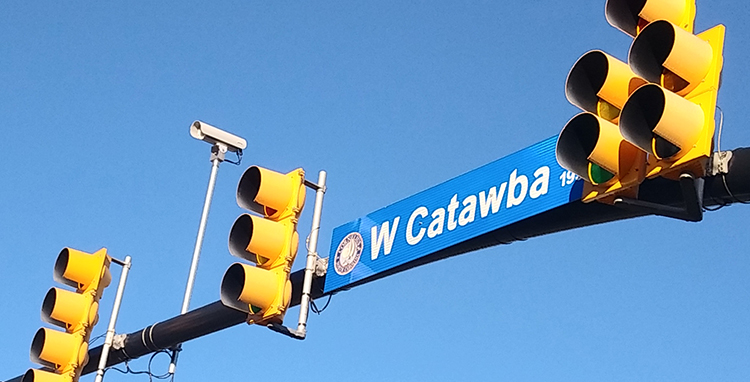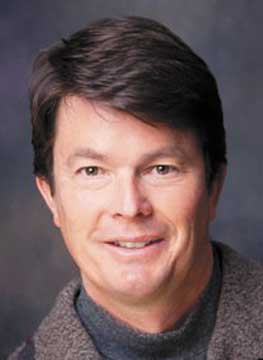
Feb. 2 It looks like the Adaptive Signal Control system for West Catawba will be activated onTuesday. It will change the way the traffic signals operate Hwy. 21 to Jetton Road—and improve traffic flow
The system works by analyzing traffic metrics through cameras and uses artificial intelligence to operate the traffic lights in the most efficient way possible.
Drivers should be alert because the intervals can be short or long depending on the volume of traffic.
The new $548,000 Adaptive Signal Control Technology system (ASCT) was delayed because of problems with network security.
Hardware and cameras were installed weeks ago, but problems arose around NCDOT controls and online security. It turns out NCDOT had never had a third party connect to their computer network before, so there were security concerns.

NAAS
“This has been a day-for-day slip since October despite the fact the system is now completely installed,” said Town Commissioner Kurt Naas, a self-taught expert in the world of traffic and government.
He said motorists will notice a big difference once it’s fully operational.
“The traffic signals will not cycle like they used to. The system is designed to give green lights to the lanes that need them only for the amount of time necessary and then quickly move on to where the system sees the next highest demand,” Naas said.
Cyber-security hacks of governmental and corporate websites are national—and local—news. Last year there was a major hack of the Mecklenburg County website, which virtually froze all web site transactions in county government for over a week.
In January federal prosecutors announced they found an international stock-trading scheme that involved hacking into the Securities and Exchange Commission’s EDGAR filing system.
The ASCT system uses analytic cameras to automatically adjust traffic signal times based on real-time traffic conditions.
Rhythm Engineering, the private sector designer of ASCT, has worked with state transportation departments in many other parts of the country, including South Carolina, Virginia and Florida.
Traffic signal patterns may be less predictable and motorists will need to stay alert since the green lights will appear quicker than the time-based cycle currently in use.
In addition to the cameras, diamond-shaped radio transmitters have been installed on the side of the road at each of the seven signals, which allow the signals to literally “talk to each other” and establish the optimum flow for traffic.
The town is paying $152,000 for the system, far less than the cost. NCDOT is contributing $161,000, while Rhythm itself is contributing $235,000 to help get a foothold in the North Carolina market.
Short travel delays may occur along West Catawba during the process of turning the system on.



